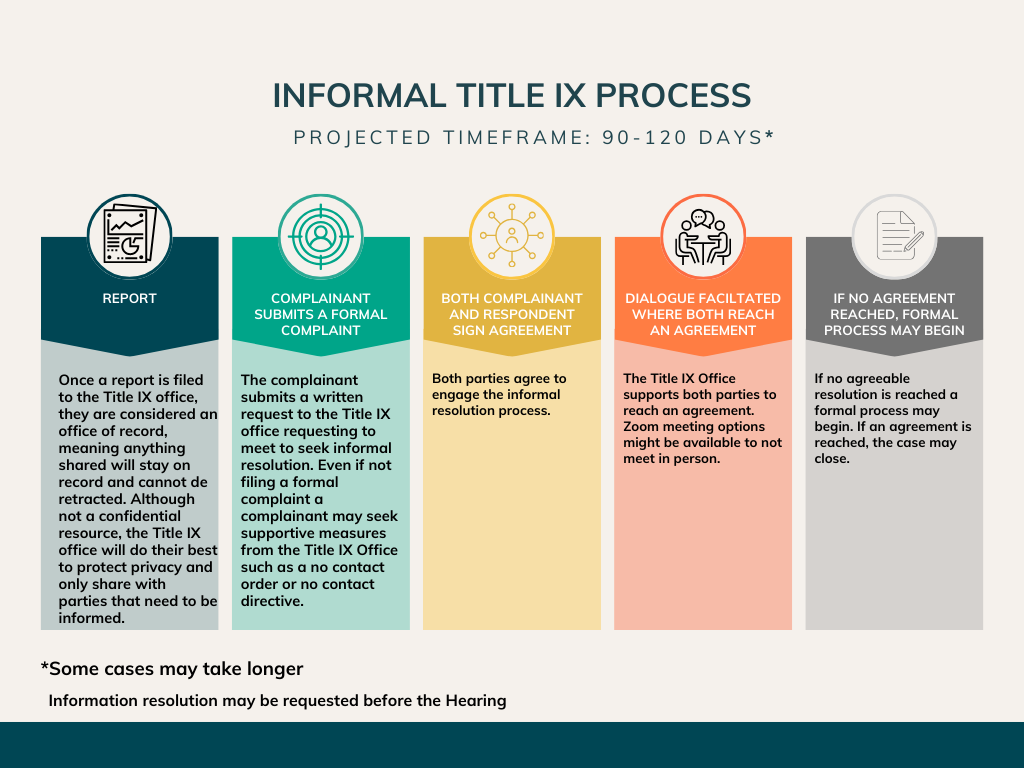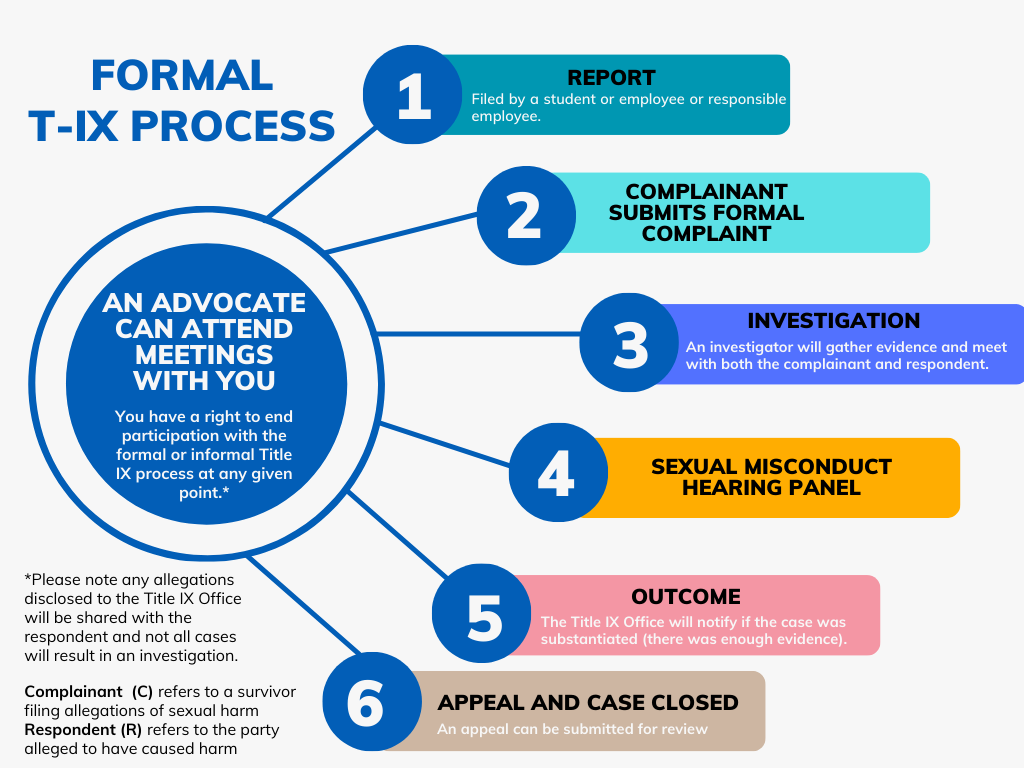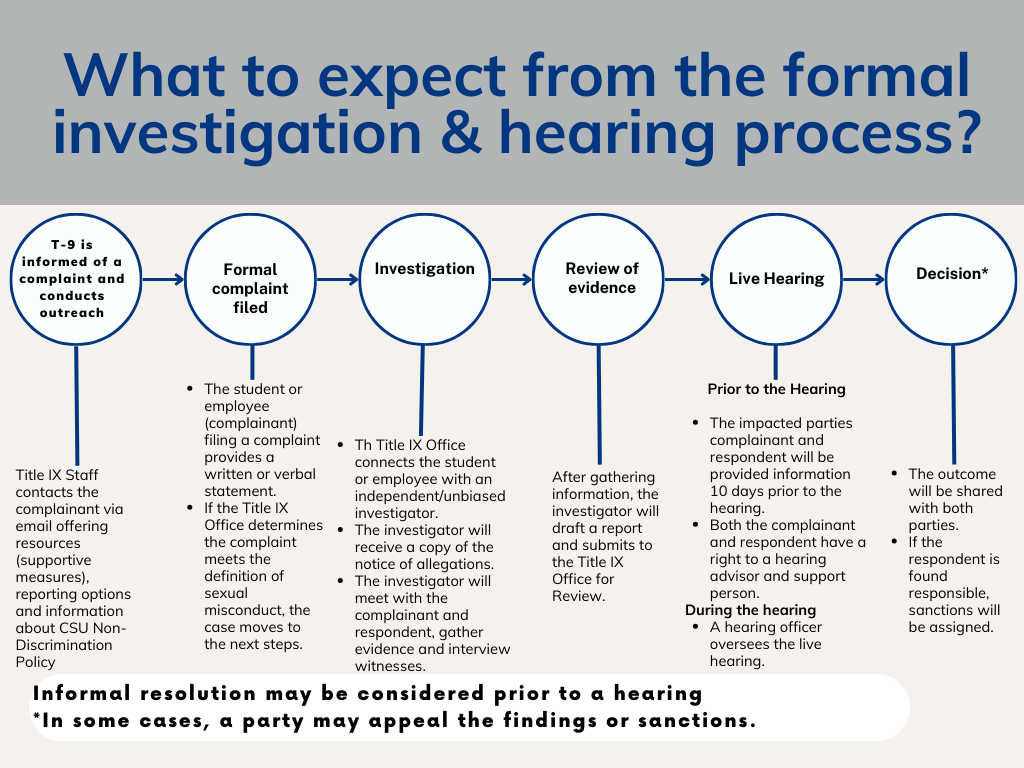 myCSUSM
myCSUSMMandated Title IX Reporting

If you are an employee of CSUSM, either faculty/staff or student employee, you are
considered a mandated reporter and must report to Title IX coordinator if you become
aware or "knows or has reason to know of allegations of any form of gender based discrimination,
including: Sexual Misconduct, Sexual Exploitation, Sexual Harassment, Dating Violence,
Domestic Violence, Stalking or Retaliation."
Role of a IX Mandated Reporter (Brochure)
For further information on mandatory reporting, please visit Mandatory Reporting for Employees | Title IX | CSUSM
What You Can Expect from the Title IX Process









